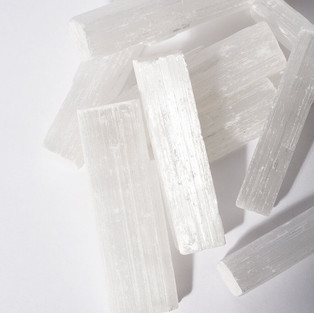Cleaning your crystals is extremely important and a lot of us use water as a means with which to cleanse them. However, what many of us didn't know is that water can rust, dissolve or even break a crystal.
Crystals are rated using a Mohs Scale, which determines their hardness. It is done by using two minerals together to see which ones sustains or causes damage. The more resilient to damage, the harder the mineral.
Minerals are rated on a scale of 1-10, with 1 being the softest and 10 being the hardest. The scale is paramount for crystals as the softer the crystal, the more susceptible it is to damages via the minerals contained in water.
A good rule of thumb, is if the crystal sits below a 5 on the Mohs scale, the more likely it is to be damaged by water. If you think of the softest crystal being Talc and the hardest one being Diamond, you wouldn't want to chance going below the midway mark.
If you don't have a chart to hand, be weary of crystals ending in "ite" as these are, nine times of ten, softer and more susceptible to water damage.
Have a look at the below, which outlines a vast array of crystals and where they are placed on the scale:

However, there are a few hard crystals to watch out for. Any iron based crystals should be kept well clear of water as the iron reacts with the water causing the crystal to rust, this includes crystals like Pyrite, Magnetite & Tangerine Quartz
There are plenty of other methods out there if you find yourself with a softer crystal that's in need of a cleanse see my blog post on 'How to Clean your Crystals' which outlines various other methods to cleanse those beauties.












Comments